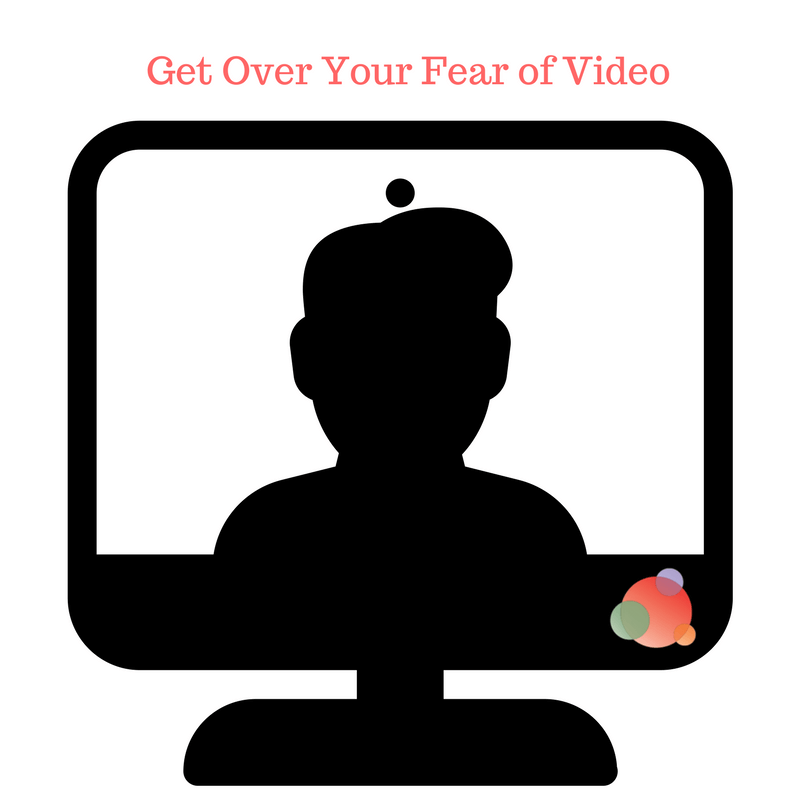 I have a friend who is a serial entrepreneur.
I have a friend who is a serial entrepreneur.
He sold his first business about 10 years ago and he is now on his third iteration.
And, because this third business is focused on information products, he and I spend quite a bit of time together.
We punch holes in the other’s ideas (that’s not super fun), work through challenges, and discuss best practices.
When I talked to him the other day, we were (as always) on Zoom video chat.
He likes to sit in front of his bay window so he can brag about how sunny and gorgeous it is outside, while I haven’t seen the sun in Chicago in 1,300 years.
But he was complaining about how “washed out” he looked.
Likewise, a client gets on Zoom with me every other week and complains about how much better I look than she does.
Um, guys?
It’s not that I look better. It’s that the window behind you is washing you out.
We Are Our Own Worst Critics
Video is so hard.
We are most definitely our own worst critics.
Another client told me she refuses to turn the video on because she spends the entire call being critical of herself.
That sort of defeats the purpose of using video to try to replace the in-person experience.
But yes, it’s hard and we do spend time looking at ourselves and wondering why we hadn’t seen before how badly we need to pluck our eyebrows.
(Just me?)
There is only one way to get over your fear of video: Actually do it!
Get Some Less Risky Video Practice
The easiest way to get used to seeing yourself on camera is to conduct meetings on video chat.
This is also the less risky way because it’s not being recorded and you don’t have to listen to or watch yourself when it’s over.
You can practice getting yourself video ready with these calls.
For instance, move your desk or laptop around and find the place you look the best in daylight.
Get in a spot where the window is in front of you, not behind you.
Buy yourself a nice lamp and change it’s position as the daylight changes. Figure out what is most flattering for you.
And, as video extraordinaire, Tony Gnau, always says, get your computer’s camera above eye level, so it’s looking down at you.
There is nothing less flattering than a camera looking up at you (hello, double chins!).
In fact, I asked Tony what he recommends for those of us who are conducting meetings via video.
He highlighted three mistakes (and a bonus) nearly everyone makes.
The Camera Lens is Too Low
Many people who shoot video of themselves, flip open their laptop, adjust the tilt to frame themselves up, and hit record.
The first thing you can do to improve the way you look is to stop doing this!
Shooting from a low angle tends to be very unflattering unless it’s a highly stylized perspective.
Solution: You want the camera lens to be even with your eyes or slightly higher.
Think about how you take a selfie.
Prop up the laptop or camera on some books. Lower your chair a bit.
A side note on camera angle…if you can see the crease where the wall meets the ceiling in your shot, your camera is too low!
Bad Lighting
Most people just use the existing light in the room.
They don’t think of the source location of the light in respect to their computer.
Solution: Position your light source to be right behind the camera lens and slightly above it.
Think about all of those mobile news cameras you see on TV. Their lights are right on top of the camera pointing down at the people they’re recording.
If you can’t manage that, put the light just to the left or right of the camera…the closer to the lens, the better.
Also, if your camera situation is mobile, set it up in front of a window.
Natural light is perfect to light people on camera.
One more thing, one of the worst scenarios is when the room is fairly dark and the light from a computer screen is illuminating the person in front of the camera.
Avoid that at all costs.
The Wrong Chair
Comfortable, fluffy chairs are no good.
Chairs with high backs that can be seen in the shot are no good.
Solution: Look for the most uncomfortable chair in the room (a metal folding chair is great!) and use that.
Why?
It forces you to sit with good posture. Sit-up, smile, and be the star that you are.
Bonus Tip
If you are shooting video using your mobile phone, turn the phone on its side so your aspect ratio is horizontal, not vertical.
Do not contribute to vertical syndrome!
Then You Can Move On Up
Once you get used to seeing yourself on camera through your video chat meetings, it’s time to move on to video content and livestreaming.
More on that later…after you’re all comfortable with the less risky video.
And now it’s your turn.
What advice do you have for those working to get over their fear of video?